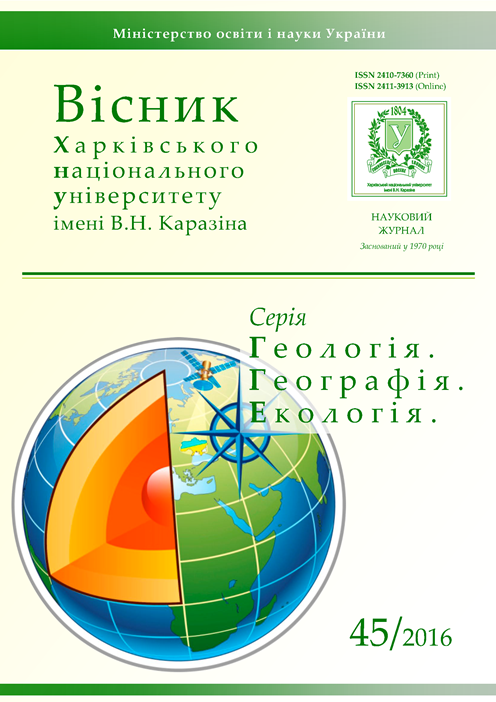Gas well production enhancement on the application of innovative structural and thermal insulation nano-coatings
Abstract
At the late stage of gas condensate fields’ exploitation deterioration of hydraulic and gas-dynamic efficiency of jointing flowline pipe lifts and gas collectors leads to the decrease in total flow rates in pattern wells. There are many technical ways to improve a hydraulic efficiency of complicated gas collecting systems in gas condensate fields.
As for the thin coatings with specific thermo-physical, geometrical and structural properties, there is an opportunity to have more simple solutions to optimize hydraulic efficiency of pipe system and particular pipeline sections. The most popular methods of field experience include smooth, turbulence-insulating and turbulizing coatings.
The fact to be focused on has become the result of calculations - a significant increase in computational and theoretical well production in complex application of special (two or three) coatings in comparison with separate coatings applied.
The base application object is averaged well in Mashevsky field in Poltava region in Ukraine. The general description of the field is following: the average depth of productive horizons is up to 4 km; the length of particular gathering lines up to 2.5 km; the used FCP diameter- 63 mm; the reservoir temperature - 70-80 degrees Celsius and wellhead pressure-s 1-3 MPa. The wells work quite steadily with the consequent pressure reduction at the wellhead and in the layer.
Simplified modelling is based on known equations by Darcy, Bernoulli, Adam, Weymouth, Shukhov and Reynolds. The basic equations were taken in a non-linear form with proven simplifications in field experience that significantly reduced the computing time and made it possible to solve problems in a general setting. In this case the use of three main surfaces is considered: smooth, heat-insulating and turbulizing. Most parameters and initial data are typical for Ukrainian deposits with an average value of stocks.
Nonlinear equations systems solution given by a mathematical model of non-isothermal lifting in condensate wells is done by using advanced algorithmic techniques in Mathcad program, by rank-Kut 4th order with the addition developed by the authors of the initial and boundary conditions in accordance with the physical sense.
Downhole lifting studies were made using developed mathematical models by objects of Mashevsky development, which showed a good value for the simulation adequacy and close agreement between calculated and measured thermometer, manometric and flow-measuring parameters.
Downloads
References
2. Carlos R.C. Limaa, Natália F.C. de Souzaa, Camargo, Flávio. (2013). Study of wear and corrosion performance of thermal sprayed engineering polymers. Surface and Coatings Technology, 220, 140–143.
3. Guilemany, J. M., Dosta, S. and Miguel, J. R. (2006). The Enhancement of the Properties of WC-Co HVOF Coatings through the Use of Nanostructured and Microstructured Feedstock Powders, Surface and Coatings Technology. 201, 3-4, 1180-1190.
4. Asensio, J., Pero-Sanz, J. A., Verdeja, J. I. (2003). Materials Characterization, 49, 83-93.
5. Celik, E., Culha, O., Uyulgan, B., AkAzem, N. F., Ozdemir, I., Turk, A. (2006). Surface & Coatings Technology 200, 4320-4328.
6. Espallarga,s N., Berget, J., Guilemany, J. M., Benedetti, A.V., Suegama, P. H. (2008). Cr3C2–NiCr and WC–Ni ther-mal spray coatings as alternatives to hard chromium for erosion–corrosion resistance. Surface & Coatings Tech-nology, 202, 1405–1417.
7. Vyahirev, R. I., Korotaev, Yu. P., Kabanov, N. I. (1998). Teoriya i opyit dobyichi gaza [Theory and experience in gas production]. Publishing House «Nedra», Moscow, 479. ISBN 5-247-03801-0
8. Deacons D.I. (1959). Geotermiya v neftyanoy geologii. [Geometry in petroleum geology]. Gostoptehizdat, Moscow, 324.
9. Korotaev, Y. P., Galiullina, Z. T., Krivoshein, B. L. (1966). Neizotermicheskoe techenie realnogo gaza v sisteme plast – skvazhina – gazosbornaya set [Not isothermal flow of a real gas in a layer system – well – gas gathering net-work]. Trudyi VNIIgaz. Nedra, Moscow, 23/27, 9–12.
10. Karachinskiy, V. E. (1975). Metodyi geotermodinamiki zalezhey gaza i nefti. [Methods geo thermodynamics depos-its of gas and oil]. Nedra, Moscow, 149.
11. Kunz, K. and Tixier, N. (1957). Termicheskie issledovaniya gazovyih skvazhin (perevod s angliyskogo) [Thermal gas wells research (translation from English)]. Questions petroleum geophysics. Gostoptekhizdat, 412.
12. Charny, I. A. (1966). O termicheskom rezhime burovyih skvazhin [About the thermal boreholes mode]. Gas indus-try, 10, 15–18.
13. Gusev, V. P. (2009). Osnovyi gidravliki [Fundamentals of hydraulics]. Uchebnoe posobie. Tutorial. Tomsk. Pub-lishing house TPU, 172.
14. Trapeznikov, S. Y. and Lushkin, K. A. (2011). Issledovanie koeffitsienta gidravlicheskogo soprotivleniya pri neiz-otermicheskom dvizhenii vyisokovyazkoy nefti po truboprovodu [Research of hydraulic resistance coefficient of non-isothermal motion of heavy oil by pipeline]. Electronic scientific journal «Oil and Gas Business», 2, 304–310.
15. Fyk, M. I. (2014). Utochnennya rozrahunku efektivnosti roboti DKS v umovah faktichnih termogradientiv ta suchasnih pokrittiv NKT [Refinement of calculating the efficiency of compressor booster station in terms of actual termohradiyentiv and advanced coatings tubing]. Oil Industry of Ukraine, 1, 25–28.
16. Yakovlev, E. I. Zvereva, T. V., Soschenko, A. E. et al (1990). Truboprovodnyiy transport produktov razrabotki gazo-kondensatnyih mestorozhdeniy [Pipeline transport of gas condensate fields of product development]. Nedra, Mos-cow, 240.
17. Kovalko, M. P. Hrudz, V. Y., Myhalko, V. B. et al. (2002). TruboprovIdniy transport gazu [Pipeline transportation gas]. Kyiv, Agency for Rational Energy Use and Ecology, 600.
18. Ibragimov, Y. H. et al. (2013). Eksperimentalnoe issledovanie protsessov gidrodinamiki v trubkah teploobmennika pri primenenii lokalnyih turbulizatorov [Experimental research of hydrodynamic processes in the heat exchanger tubes in the application of local turbulence]. The young scientist, 3, 56-58.
19. Kutia, Mykhailo, Fyk, Mykhailo, Kravchenko, Oleg, Palis, Stefan, Fyk, Ilya (2016). Improvement of technological-mathematical model for the medium-term prediction of the work of a gas condensate field. Eastern-European Jour-nal of Enterprise Technologies 5, 8(83), 40-48. DOI: http://dx.doi.org/10.15587/1729-4061.2016.80073





